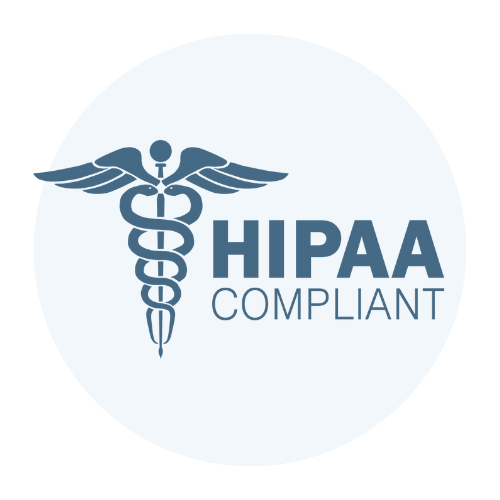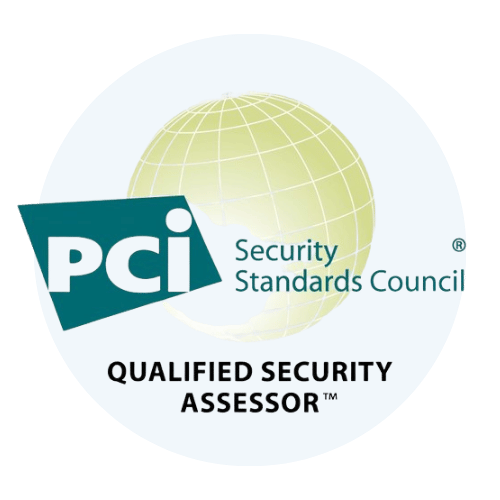Understanding Deception Technology in Cybersecurity

Deception technology is redefining how we think about cybersecurity. Instead of just fortifying systems with stronger defenses, it takes a proactive approach by engaging directly with attackers. Through decoys, honeypots, and other fake digital assets, it creates a false landscape that traps, observes, and analyzes malicious intent. Why is Deception Technology awareness significant? Early detection – It spots threats before they cause damage. Valuable insights – It tracks hacker behavior to strengthen defenses. Reduced impact – Potential breaches are neutralized in controlled environments. Unlike traditional security tools that simply focus on blocking or monitoring, deception technology misleads attackers, turning their actions into useful intelligence. This strategy empowers businesses and cybersecurity teams, allowing them to stay one step ahead of evolving threats. Key Components Deception technology components are designed to mimic genuine systems and data, tricking intruders into revealing their intentions or being led astray. Below are the key elements that make up this sophisticated strategy: Types of Deceptive Assets Honeypots – These are decoy systems that appear as legitimate targets, enticing attackers to interact with them. Any engagement with a honeypot signals suspicious activity, helping security teams spot threats early. Decoy Servers – Fully functional replicas of a real server designed to trap intruders. They attract and isolate attackers, providing a controlled environment for analysis. Fake Credentials – Deliberately planted fake usernames and passwords lure attackers into revealing their presence when attempting unauthorized access. Breadcrumbs – Subtle yet deliberate network artifacts, such as fake file paths or registry entries, that guide attackers toward decoys instead of real assets. Technological Underpinnings The effectiveness of deception technology is magnified through advanced tools like Artificial Intelligence (AI) and Machine Learning (ML). These technologies help to: Build smarter decoys – AI generates realistic assets that closely resemble legitimate systems. Detect patterns – ML algorithms analyze interactions with decoys, identifying new tactics or unusual behaviors used by attackers. Automate responses – Once an intrusion is detected, AI can trigger alerts, isolate threats, or deploy countermeasures instantly. Overall, this dynamic approach not only bolsters system security but also provides invaluable data to anticipate and prepare for future threats. Learn more about our cybersecurity and compliance services. Contact our experts today Benefits of Deception Technology From traditional defensive strategies to a more dynamic and proactive approach, using deception technologies in cybersecurity is a welcome change. Its distinctive features give businesses many significant benefits that help them remain ahead of competitors. Early Threat Detection With deception technology, threats are identified before they can cause damage. By placing believable decoy systems, fake credentials, and other traps within a network, organizations create opportunities to lure attackers. The moment these assets are accessed, an alert is triggered. This enables security teams to isolate the threat and take quick action. By preventing attacks from getting worse, early detection safeguards operations and data. Reduced False Positives Traditional security tools often flag legitimate activity as a threat, leading to frustration and wasted time. Deception technology minimizes this issue. How? Suspicious interactions with decoys are clear signs of malicious intent. Unlike traditional systems, there’s rarely any ambiguity. This precise filtering reduces false positives, ensuring security teams focus on real threats. Enhanced Threat Intelligence Every attacker interaction with a decoy generates valuable data. Hackers unknowingly reveal their methods, tools, and intentions when engaging with these deceptive assets. This information equips security teams to: Recognize emerging attack strategies. Boost defenses in response to evolving threats. Use customized countermeasures to get ready for potential scenarios. Organizations may learn practical information about what attackers target and how they operate by examining these interactions. When deception technology is integrated into a security framework, it does more than just add a layer of defense. It equips businesses with the knowledge and tools to build a resilient and intelligent cybersecurity strategy. Implementation Strategies Effectively deploying deception technology requires thoughtful planning and a commitment to ongoing management. Following best practices ensures a seamless integration into existing security frameworks and maximizes its potential. Here’s how to get started. Best Practices for Deployment Integrating deception technology into your security setup is not a one-size-fits-all process. Consider these guidelines for successful implementation: Strategic Placement of Decoys – Position decoys where attackers are most likely to target, such as unused IP addresses or sensitive system zones. This increases the chances of engagement while keeping real assets safe. Align with Security Goals – Customize deception strategies to match the organization’s unique risks and objectives. A targeted approach ensures that resources are effectively utilized. Layered Security – Use deception alongside traditional defenses like firewalls, intrusion detection systems, and endpoint protection. This multi-layered approach boosts overall effectiveness. Adaptability – Continuously evolve the deceptive environment to keep pace with new attack methods. Static setups risk becoming predictable and ineffective over time. Real-time Monitoring and Response The success of deception technology heavily relies on active observation and swift reactions. Passive setups won’t extract the full value of this approach. To leverage its benefits, organizations should focus on the following actions: Continuous Monitoring – Monitor interactions with deceptive assets in real-time to track attacker movements and gather intelligence. Each interaction is an opportunity to understand tactics and motives. Analysis of Activity – Regularly analyze the behavior of intruders engaging with decoys. This data helps refine security protocols and prepare for future threats. Automated Threat Response – Use AI-driven tools to automate actions like isolating compromised systems, sending alerts, or neutralizing attackers. Immediate responses can prevent further intrusion attempts. By deploying deception technology strategically and maintaining real-time monitoring and analysis, organizations create an environment that actively works against attackers. Use Cases Below are some critical use cases where deception technology makes a significant impact. Perimeter Defense Deception technology strengthens the outer edge of networks by confusing attackers during their reconnaissance efforts. Key examples include: Decoy Servers: Fake systems designed to appear valuable, luring attackers to waste time interacting with non-critical assets. DNS Traps: False DNS entries that trick attackers into revealing their activities early. Immediate Alerts: Any interaction with these decoys triggers
7 Methods Used by Businesses to Identify Cybersecurity Risks
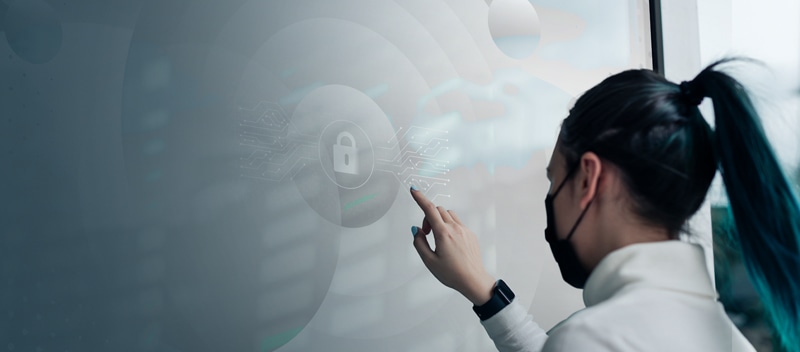
Cybersecurity is not merely an industry buzzword or a marketing ploy; it should be a top priority for all businesses, regardless of size. Since digital dangers are constantly evolving, it’s more crucial than ever to protect sensitive data and adhere to legal requirements. Ignoring these risks might have significant repercussions for your business. But where do you begin? To help, we spoke to seven seasoned business leaders about how they identify and manage cybersecurity risks. Their insights may help you bolster your defenses and stay prepared for the unpredictable challenges of the digital age. Methods Used by Businesses to Identify Cybersecurity Risks 1. Proactive Strategy and Cultural Integration “In my experience leading health IT initiatives at Riveraxe LLC, cybersecurity risk management is about proactive strategy and cultural integration. We prioritize understanding the potential vulnerabilities in healthcare data systems by conducting thorough risk assessments regularly. This helps us identify weak points where data breaches might occur. We implement agile risk-mitigation strategies, often incorporating tools like Model-Driven Design to ensure our tech solutions align seamlessly with organizational needs. For example, when working on an EHR system for a client, we included regular security audits and real-time monitoring to keep sensitive data safe. This proactive approach led to a noticeable decrease in unauthorized access incidents. Investing in consistent staff training is also crucial. Everyone from developers to administrators is trained to recognize threats and respond effectively. A recent case saw us improving the end-user experience by simplifying security protocols, engaging employees, and thus reducing the chance of human error. This holistic focus on both tech and team makes managing cybersecurity risks comprehensive and dynamic.” David Pumphrey, CEO, Riveraxe LLC 2. Combine Encryption and Access Controls “As the CEO of a legal-tech company focused on digital businesses, I’ve seen how cybersecurity risks can impact operations. One effective method we’ve implemented is the combination of encryption and access controls. By encrypting data and using two-factor authentication, we minimize the risk of unauthorized access. At KickSaaS Legal, we apply strong organizational strategies alongside technological solutions. We conduct regular audits to ensure compliance with GDPR and other regulations, which helps us identify vulnerabilities. Employee training is key; everyone is educated on spotting phishing attempts and handling data safely. An example that stands out is when one of our SaaS clients revamped their data security protocols based on our recommendations. They implemented robust password policies and conducted regular security training sessions, which led to a 30% reduction in phishing-vulnerability incidents. For any executive looking to manage cybersecurity risks, focus on proactive measures like these and ensure a culture of continuous learning and adaptation in cybersecurity practices.” Christopher Lyle, Owner, KickSaaS Legal 3. Embed Cybersecurity in Department KPIs “I can personally recommend building cybersecurity risk management directly into each department’s KPIs. Don’t leave cybersecurity in the IT department—embed it as a part of everyone’s performance expectations. This makes cybersecurity an organization-wide responsibility, where all teams play a part in identifying and preventing risks associated with their function. For instance, in our finance department, security of data and monitoring for suspicious transactions are the KPIs. We have project-management objectives to ensure the security of client data in every stage of a project. In this way, we are integrating cybersecurity into the process, instead of it being an IT-centric separate challenge. It also helps every department get more intel about threats that are unique to their role and that may not always be apparent.” Alex LaDouceur, Co-Founder, Webineering 4. Understand Critical Assets and Vulnerabilities “I prioritize a clear understanding of our organization’s critical assets and potential vulnerabilities. We continuously evaluate these areas by conducting regular risk assessments and closely monitoring any changes in our digital landscape. The key is to maintain a risk-aware culture where every team member understands their role in protecting data and systems, supported by well-defined policies and ongoing training. I also recommend implementing a layered defense strategy, where multiple controls work together to guard against potential breaches. Collaboration with other departments is essential to ensure that risk management efforts align with our overall business goals. Regular testing of our response plans keeps us prepared for evolving threats, while effective communication of risk insights with leadership and stakeholders reinforces a proactive approach across the organization.” Christian Espinosa, Founder and CEO, Blue Goat Cyber 5. Conduct Comprehensive Risk Assessments “In the rapidly-evolving landscape of technology, identifying, assessing, and managing cybersecurity risks has become paramount for any organization. The first step is to conduct a comprehensive risk assessment. This involves identifying critical assets, understanding potential threats, and evaluating vulnerabilities within the system. Regularly updating this assessment ensures that you are aware of new threats and emerging vulnerabilities. I recommend using automated tools for vulnerability scanning combined with manual assessments to provide a thorough evaluation of your company’s risk landscape. Once risks are identified, the next crucial step is to assess their potential impact and likelihood. Prioritizing these risks allows us to focus on the most critical threats first. Implementing a risk matrix can help in categorizing risks based on their severity and probability, enabling the development of an effective mitigation strategy. Risk assessment should be a dynamic process that evolves with technological advancements and changing threat environments.” Tomasz Borys, Senior VP of Marketing & Sales, Deep Sentinel 6. Integrate Security into Operational Practices “I focus on embedding cybersecurity into the core of our operational practices. Instead of treating security as a separate function, we integrate it into every phase of our workflows — from product development to service delivery. This approach ensures that security considerations are part of every decision, helping us anticipate and reduce potential vulnerabilities early on. I also advocate for scenario-based planning, where we simulate specific threats relevant to our industry. These simulations help us understand how different risks could impact our operations, keeping our response measures practical and rooted in real situations. We use these insights to adjust our risk-management approach as needed, remaining agile in the face of new threats and always ready
Exploring the Innovative Features of iTrust AI Assistant
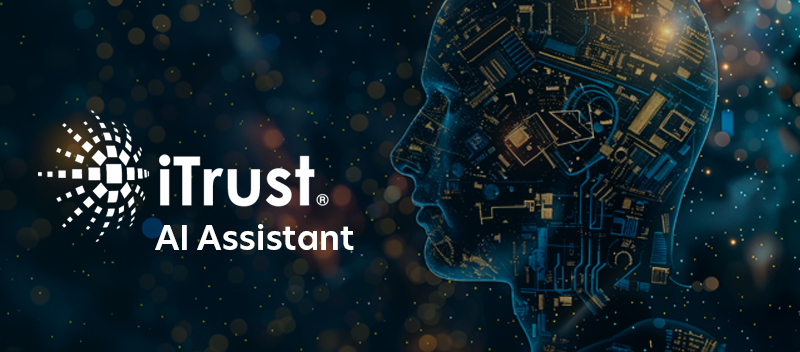
iTrust is at the frontier of assessment and control of cyber threats. Businesses are provided with accurate cyber risk ratings using modern and advanced technology for them to know their security posture. But understanding risks is just the beginning. To bridge the gap between insight and action, iTrust went a step further by creating the iTrust AI Assistant. This advanced tool was designed to simplify complex data, help make dense vulnerability reports digestible, and turn confusing security challenges into clear, actionable steps. We interviewed one of the developers behind iTrust to unpack the story behind the AI Assistant. You’ll learn: What drove its development and the problems it aims to solve. Its standout features include interactive guidance and real-time threat alerts. How it safeguards user data and ensures client trust. What the future holds for this innovative solution. Interview with Developers Interviewer: Today, we’re speaking with Volodymyr Khalaburskiy, a Head of Product at iTrust, TrustNet Inc., and one of the key minds behind the creation of the iTrust AI Assistant. Thanks so much for joining us today, Volodymyr. To kick things off, what was the driving force behind creating the iTrust AI Assistant? Volodymyr Khalaburskiy: It’s great to be here! Honestly, the idea for the iTrust AI Assistant came straight from the challenges we saw our users dealing with. Two big ones stood out. First, there was the issue of vulnerability reports. These reports often run hundreds of pages, and they’re not exactly light reading. Trying to figure out what’s important in that sea of technical language can be overwhelming, even for seasoned professionals. The second problem was translating those technical fixes into plain language. A solution is only as good as how easily it can be understood and implemented. Many of our users weren’t sure how to take the recommended actions because the advice landed like a riddle. We wanted to create something that solved both problems at once. That’s where the AI Assistant came in. It simplifies reports, highlights what’s critical, and explains solutions in a way that just makes sense. And we didn’t stop there; it’s available 24/7, so users always have help on hand. — Interviewer: That sounds like a game-changer. What are some features that really make the iTrust AI Assistant stand out? Volodymyr Khalaburskiy: There are quite a few, actually, and we’re really proud of how versatile it is. I can enumerate the highlights below as: Always Available: The assistant is live 24/7. Cyber risks don’t wait for office hours, so neither does it. Deep Threat Analysis: It identifies vulnerabilities and breaks them down for users, so they know what to tackle first. Interactive Q&A: This is a big one. It’s not just dumping solutions at you — it walks you through them. You can ask follow-up questions and get clear guidance in real-time. Knowledge Base Access: The assistant links directly to the National Vulnerability Database (NVD), so users can tap into a treasure trove of up-to-date cybersecurity insights whenever they need them. Proactive Recommendations: It doesn’t just react to issues; it flags potential vulnerabilities before they escalate, giving users a chance to prevent problems. Simplified Service Requests: Instead of juggling support tickets or emails, users can streamline everything through the assistant. It makes the whole process faster and much less stressful. What’s exciting is how these features come together. It’s more than just another tool; it’s like having a cybersecurity expert you can talk to anytime. — Interviewer: That’s really impressive. But this leads to another crucial topic; data privacy. Cybersecurity is built on trust. How does the AI Assistant make sure sensitive data stays secure? Volodymyr Khalaburskiy: That’s such a critical question, and trust is non-negotiable for us at iTrust. We’re a cybersecurity company, so protecting sensitive information has always been at the heart of what we do. First off, every interaction with the AI Assistant is encrypted using state-of-the-art protocols. Whether it’s a simple query or more detailed system data, it’s locked down to prevent unauthorized access. We also operate within the strict boundaries of global privacy regulations like GDPR. Compliance is a guiding principle for us. All the assistant’s features are designed to keep user data safe and ensure privacy rules are followed to the letter. Lastly, we don’t rest on our laurels. We run routine audits and security checks to find and eliminate vulnerabilities. Cyber threats evolve, and so do we. This commitment means the assistant doesn’t just protect against today’s risks, it’s prepared for tomorrow’s challenges, too. — Interviewer: Love that mindset. Now, shifting gears a little. What’s next for the iTrust AI Assistant? Any exciting developments you can share? Volodymyr Khalaburskiy: To be honest, I believe that we’re only scratching the surface of what this assistant can do. We launched the BETA version in late 2024, and while the feedback has been fantastic, there’s plenty of room for growth. One immediate focus is improving its accuracy. Right now, the assistant is hitting a 94% accuracy rate for most requests, which is solid, but we’ve set a goal to push that to 98% by early 2025. It’s important to us that users feel completely confident in the advice they’re getting. We’re also working on expanding its feature set. One thing in the pipeline is enabling the assistant to analyze penetration test reports, which will allow it to deliver even more precise recommendations. Penetration tests can be incredibly complex, so making that data actionable will provide huge value for our clients. Beyond that, we’re looking to scale its capabilities across industries. Cybersecurity affects everyone, whether you’re in finance, healthcare, or retail. Our goal is to make the assistant an accessible solution for businesses of all shapes and sizes. — Interviewer: It really sounds like the possibilities are endless. With all these innovations, it’s clear the assistant is already making a big impact. Volodymyr Khalaburskiy: Absolutely. Seeing how it helps clients tackle their toughest cybersecurity challenges has been so rewarding. This isn’t just about technology anymore; it’s about making
Cybersecurity Framework Profiles: Tailoring NIST CSF to Your Organization’s Needs
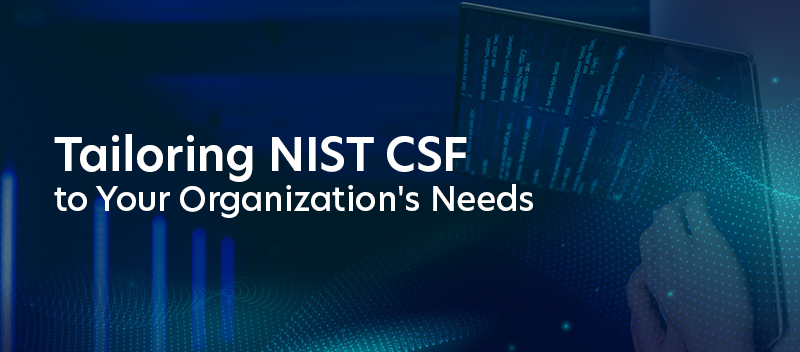
Cybercrime isn’t slowing down. In the last two years alone, the global cost of cybercrime hit a staggering $8 trillion — that’s over $250,000 every second. Projections claim that it can climb to $10.5 trillion this year. If these numbers feel overwhelming, they should. The NIST Cybersecurity Framework (CSF) is a go-to guide for managing cybersecurity risks. It’s comprehensive, flexible, and widely respected. But here’s the catch: it’s not always easy to implement. Many organizations struggle with complexity, wrestle with how to prioritize their steps or find that they don’t quite fit their specific needs. Enter NIST CSF Profiles. These profiles allow you to customize the framework for your unique risks and business goals. The benefits? Strengthened risk management. Simplified compliance. Smarter resource allocation. A more efficient cybersecurity strategy. This guide will show you how tailoring the NIST CSF through profiles can transform your organization’s cybersecurity. What are NIST CSF Profiles? NIST CSF Profiles are customized subsets of the NIST Cybersecurity Framework. They are developed to match the unique requirements of a business, considering variables such as industry, size, sector, and risk tolerance. Consider them as your personalized road maps that direct your cybersecurity efforts. The purpose of these profiles is clear: Simplify implementation by narrowing the focus to the controls that matter most to your organization. Structure risk assessment and prioritization to address the most critical threats first. Improve team communication and collaboration by providing everyone with a shared, clear framework. There are several types of profiles, each suited to different needs: Sector-Specific Profiles: For industries like financial services or healthcare, with unique regulatory and risk landscapes. Size-Based Profiles: Tailored for small businesses, medium enterprises, or large corporations. Risk-Based Profiles: Designed around different levels of risk tolerance — high, moderate, or low. Custom Profiles: Built by individual organizations for their specific goals and requirements. These profiles help align cybersecurity strategies with real-world challenges, ensuring more effective and efficient risk management. To know more about our NIST Penetration Testing services, Click Here How to Select and Implement Appropriate Profiles Selecting and implementing the right NIST CSF profile requires careful planning and thoughtful execution. By breaking the process into manageable steps, organizations can ensure they take a structured approach to enhancing cybersecurity. Step 1: Conduct a Risk Assessment Before anything else, you need to know where you stand. Identify key cyber threats and vulnerabilities. What are the most pressing risks your organization faces? These could include phishing, ransomware, or insider threats. Determine your risk tolerance. Some organizations might be more risk-averse, while others might accept a higher degree of uncertainty based on their operations. Understanding what’s at stake is the foundation for everything else. Step 2: Evaluate Available Profiles With a clear picture of your risks, it’s time to explore the options. Research existing profiles. Are there sector-specific profiles aligned with your industry? Analyze how profiles fit your needs. Whether based on size, risk level, or sector, a good profile should complement your operations and security priorities. Step 3: Personalize the Profile Off-the-shelf profiles are a great starting point, but they’re rarely a perfect fit. Add or remove specific controls. For example, you might need stricter access controls or additional training for staff. Ensure alignment with operations. Fine-tune the profile to include the controls essential for your organizational goals and risk tolerance. Step 4: Determine Gaps Between the Current and Target Profile Create a roadmap by identifying discrepancies between your current practices and the target framework. Conduct a gap analysis. Analyze where your practices diverge from the chosen profile’s standards. Prioritize gaps for remediation. Focus first on the most critical areas, ensuring pressing vulnerabilities are mitigated promptly. Step 5: Implement and Monitor This is where strategy meets action. Develop an implementation plan. Set specific objectives, delegate responsibilities, and determine timelines for deploying each control. Adjust the implementation timeline. Ensure that rollout schedules align with your organization’s resources without overburdening the team. Continuously monitor and adapt. Regularly review your program, measuring the effectiveness of controls and responding to new or emerging threats. Review and update the profile periodically. Reassess your profile to align it with operational changes, emerging risks, and updated industry standards. Remember, a tailored approach ensures your strategy meets your unique challenges head-on. Tailoring the NIST CSF to Your Specific Needs Customizing the NIST Cybersecurity Framework is about making sure it works for your particular business environment. A structure that genuinely works for you may be developed by considering specific factors and focusing on priorities. 1. Consider Organizational Factors Every organization is different, so your approach should reflect your individuality. Industry and sector. Healthcare and financial services face vastly different regulatory requirements and threats. Size and complexity. A small business with a simple IT setup will need a different strategy from a global enterprise with a sprawling infrastructure. Business processes and IT infrastructure. How your teams work, and the technology they rely on should be central to your framework. Risk tolerance and appetite. Are you risk-averse, or can you accept some degree of vulnerability? Resource constraints. Your people, budget, and time are finite. Design within these limits. 2. Focus on Key Priorities You can’t protect everything equally, nor should you try. Identify your critical assets. Which systems and data are essential to operations? Start there. Address significant threats. What cyber risks pose the greatest harm? Prioritize tackling these vulnerabilities. Allocate resources wisely. Invest in the areas where you’ll see the most meaningful improvements in security. 3. Involve Stakeholders A cybersecurity framework without broad support is doomed to fail. Engage key stakeholders, including IT, business units, and senior leadership. Their input ensures the framework aligns with organizational goals. Foster a culture of awareness. Make cybersecurity everyone’s responsibility. When employees understand the risks, they’re more likely to follow best practices. In the end, you need to create a roadmap that’s pragmatic, effective, and built to handle the risks you face. The result? A cybersecurity strategy that not only protects but empowers your business. Optimizing Cybersecurity Frameworks with NIST CSF Profiles A
Cybersecurity Areas Organizations Are Investing In

Many organizations have to juggle budget allocation. Expenditures on operations, marketing, and advertising are commonplace. These areas often take the lion’s share because they promise growth and visibility. But what about the less flashy, equally critical investments? Workforce development and cybersecurity are frequently overlooked, even though neglecting them can lead to costly consequences. To better understand this gap, we reached out to industry thought leaders. We inquired about the percentage of their IT spending that went toward cybersecurity and, more crucially, what cybersecurity-related priorities they were setting. Their insights reveal an ongoing shift in how organizations strengthen their digital defenses. Cybersecurity Areas Organizations Plan to Increase Spending in 1. Invest in Employee Training “We allocate 5% of our IT budget to cybersecurity. The area that we are most willing to invest in is employee training. It is a cost-effective measure that will benefit us in the long run. Once all employees become well-trained in cybersecurity, we won’t have to use extra cybersecurity tools. Employees will be able to handle any cybersecurity risks. They will quickly develop strategies to mitigate risks and detect threats. Additionally, they will recognize phishing attacks, which can come as emails, calls, and messages. As a result, third parties cannot hack the systems or access sensitive company data. With highly-trained employees in cybersecurity, the entire company’s security system will become stronger.” Jeremy Bogdanowicz, Founder & CEO, JTB Studios 2. Prioritize Threat Detection Tools “We allocate about 7% of our IT budget to cybersecurity, aligning with industry benchmarks. This allocation allows us to stay vigilant and adapt to our clients’ needs while covering essential areas like threat detection, compliance, and employee training. Different industries have unique risks, so we adjust our focus accordingly to provide thorough security tailored to each client’s risk profile. For example, in highly-regulated sectors like healthcare, we ensure that compliance measures are well-funded to meet legal standards and protect sensitive information. From my experience, investing in threat detection tools is crucial for any company, especially as cyber threats continue to increase in sophistication. Early on, we recognized the need for advanced threat detection because of real-world incidents we’ve managed—preventing potential breaches for clients that could have otherwise led to severe financial and reputational harm. Over the years, our investment in this area has proven invaluable, enabling us to catch vulnerabilities early and respond proactively. Working alongside industry professionals like Elmo Taddeo of Parachute, I’ve seen how important it is to have robust detection in place, as it often makes the difference between a quick fix and a larger crisis. Lastly, I can’t emphasize enough the value of employee training. One lesson I’ve learned is that even the most sophisticated systems can be undermined by simple human error. We’ve dedicated resources to help our clients implement regular security training programs to reduce such risks. For instance, a client in the real estate sector reported that, after implementing our training, phishing attempts targeting their team dropped significantly. Investing in your people is just as critical as investing in technology.” Konrad Martin, CEO, Tech Advisors 3. Focus on Endpoint Protection “Allocating about 15-20% of the IT budget to cybersecurity is typical for businesses that comprehend the critical importance of protecting digital assets. The allocation isn’t just about the sheer numbers but prioritizing areas with the highest vulnerability. Law firms, being prime targets for sensitive data breaches, should consider investing heavily in endpoint protection and intrusion-detection systems. These can mitigate potential threats before they wreak havoc. Investing in staff training is often overlooked but incredibly effective. Cyber threats are not just a technology problem; they’re a human challenge. Phishing scams exploit human behavior more than technical vulnerabilities. Conducting regular, engaging training sessions can empower staff to recognize and avoid security threats, adding an extra layer of protection to the firm’s digital defenses. This proactive approach reduces the likelihood of a breach from occurring in the first place. Always remember, investing in people can be as valuable as investing in any state-of-the-art technology.” Casey Meraz, CEO, Juris Digital 4. Dedicate Budget to Proactive Monitoring “In my experience, approximately 25% of the IT budget is dedicated to cybersecurity. Over time, I’ve recognized the value of this investment, especially as digital threats evolve. Much of this budget goes toward advanced threat detection and proactive monitoring, which are essential in identifying and neutralizing potential vulnerabilities before they can impact clients’ websites or data integrity. I’ve seen firsthand how early detection prevents substantial damage, both to our systems and our clients’ trust. Beyond that, I prioritize employee training and awareness. Investing in a well-trained team reduces human error, which is often a key factor in security breaches. By consistently educating my team on the latest security practices, we’ve managed to build a culture of vigilance, which has been invaluable. Compliance is also important, but I’ve found that a strong foundation in detection and training provides the most immediate and impactful defense in a cybersecurity strategy.” Brandon Leibowitz, Owner, SEO Optimizers 5. Emphasize Cloud Security and Training “Around 25% of our IT budget is allocated to cybersecurity. This aligns with our strategic emphasis on bolstering the cyber-defense systems of our digital teaching platform. We prioritize investments in areas like threat detection and employee training. Investing heavily in modern threat-detection systems is vital to proactively identify any potential threats. Approximately 15% of our cybersecurity budget is channeled here. We also understand the essential role of our staff in maintaining cybersecurity. Thus, about 10% of our budget goes for employee cybersecurity training, equipping them with the knowledge to avoid inadvertent security lapses. This combination of cutting-edge systems and robust cybersecurity awareness has proven successful in safeguarding our digital learning environment.” Lucas Tecchio, Head of Digital Content Creation, OPIT 6. Implement Zero Trust Architecture “Allocating funds to cyber-security is an essential, though sometimes overlooked, aspect of an IT budget. Typically, about 15-20% of our IT budget is dedicated to cyber-security. This might seem like a significant share, but it’s necessary to protect our digital assets and
Third-Party Cyber Risk Assessment: Strategies for Comprehensive Security Management
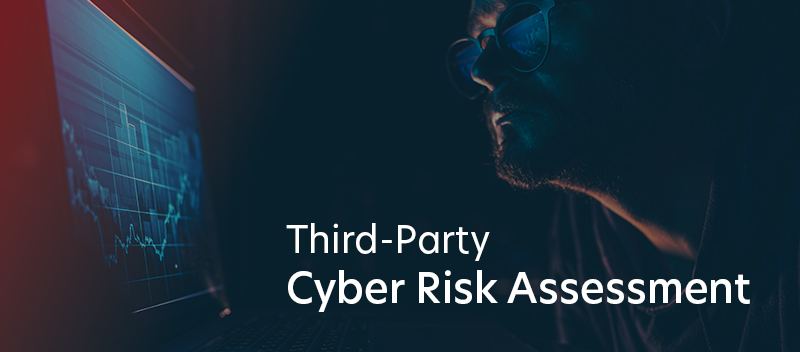
Third-party cyber risk assessment is the practice of evaluating the security measures, vulnerabilities, and potential threats posed by your external vendors and partners. Why does this matter? Third-party vulnerabilities can expose sensitive data. Non-compliance with regulations could lead to fines. A single weak link in your vendor chain may result in costly breaches. Understanding third-party cyber risk is no longer optional for procurement managers, risk professionals, and C-suite executives — it’s a business imperative. This article outlines key challenges, like managing vendor risks and evaluating security postures, while offering actionable strategies to safeguard your organization. Understanding Third-Party Cyber Risk Some of the most common types of third-party risks include: Data breaches: Vendors may have access to sensitive information that could be exposed through weak security systems. Compliance risks: Third parties failing to meet regulatory standards can put your organization at risk of costly penalties. Operational disruptions: A vendor experiencing downtime from a cyberattack can directly impact your critical services. The consequences of unmanaged vendor risk are extensive and extend far beyond financial losses. Companies may face legal repercussions, damage to their brand, and infractions that erode customer trust. Your entire cyber security posture might be weakened by ignoring third-party risks, leaving you more open to attacks. Effectively recognizing and managing vendor risk improves your security plan and fortifies your defenses against cyber attacks. For more on our Third-Party Risk Assessment services, Click Here The Third-Party Cyber Risk Assessment Process Managing third-party cyber risks requires a well-defined strategy. A robust risk assessment process helps minimize vulnerabilities and ensures vendors meet necessary security standards. Here’s how it works: 1. Initial Risk Assessment Start by conducting a detailed risk assessment to evaluate each vendor’s cyber security posture and potential vulnerabilities. Key steps include: Identifying security gaps in their processes and systems. Assessing compliance with industry regulations and standards. Evaluating how a vendor’s risks could impact your operations. This first step provides a clear understanding of whether a vendor aligns with your security requirements. 2. Vendor Selection and Onboarding Security must be central to the vendor selection process — not just cost or convenience. Shortlist vendors that meet your organization’s specific risk requirements. During onboarding, set expectations for data protection, compliance, and incident response. Ensure contracts clearly define security obligations and performance benchmarks. A secure onboarding process lays the groundwork for a strong partnership. 3. Continuous Monitoring Third-party risks evolve, so monitoring must be ongoing. Conduct regular audits and reviews of vendor performance. Use automated tools to identify emerging risks or gaps in compliance. Maintain an open dialogue with vendors to address issues proactively. With consistent vigilance, a well-executed risk assessment strategy fortifies your organization’s defenses and strengthens vendor relationships. Key Components of a Third-Party Risk Assessment Conducting a thorough third-party risk assessment requires a combination of strategies to evaluate vendors effectively and mitigate potential threats. Below are the primary components to include in your process: 1. Security Questionnaires Security questionnaires provide an essential snapshot of a vendor’s cybersecurity practices. These tools collect critical details, including: Data encryption protocols. Incident response plans. Employee training programs. By using security questionnaires, you can identify whether a vendor meets your standards and flag any security gaps early. It’s an efficient way to assess their preparedness before collaborating. 2. Penetration Testing Penetration testing involves simulating real cyberattacks to find weaknesses in a vendor’s systems. This proactive method identifies weaknesses that security questionnaires could miss. Frequent testing guarantees that suppliers satisfy the robustness required in today’s cyber environment and remain resilient against evolving threats. 3. Risk Scoring Models A structured risk scoring model helps quantify the risk that each vendor poses. Key factors to evaluate include: Compliance history. System vulnerabilities. Past incidents or breaches. With risk scoring, you can rank vendors by priority, allowing your team to focus on the highest risks while still effectively monitoring lower-risk parties. 4. Compliance Checks Ongoing compliance checks verify that vendors adhere to necessary regulations and industry standards. In addition to ensuring ethical conduct, this measure reduces legal risks. Conduct frequent audits to adjust to evolving laws or regulations and make compliance a constant endeavor. Using a combination of these tools will ensure that your third-party risk assessment remains accurate, protecting your organization and its partnerships. Best Practices for Third-Party Risk Management An effective Vendor Risk Management (VRM) strategy requires a proactive approach and clear structure. Here are three best practices to enhance your efforts: 1. Establishing a Dedicated VRM Committee Creating a dedicated committee ensures accountability and consistency in managing vendor risk. Key responsibilities of this group should include: Defining clear protocols for risk mitigation. Regularly reviewing VRM policies. Collaborating across departments to address risks effectively. A structured committee allows your organization to stay focused and prepared. 2. Implementing Automated Monitoring Tools Automation is essential for managing third-party risks efficiently. By using monitoring tools, you can: Track vendor performance in real-time. Receive alerts for changes in compliance or emerging threats. Streamline data collection for risk assessments. These tools help reduce manual effort while improving overall accuracy. 3. Regular Audits and Assessments Ongoing audits confirm that vendors meet their contractual obligations and maintain robust security practices. Consider scheduling periodic reviews that focus on the following: Evaluating the success of current risk mitigation efforts. Identifying new risks stemming from operational changes. Ensuring compliance with updated regulations. Maintaining regular oversight may strengthen your VRM framework’s resilience and protect partnerships and operations. By implementing these procedures, your company reduces weaknesses and promotes trust. Strategies for Mitigating Third-Party Cyber Risks Below are key approaches to enhance your third-party cyber security efforts: A. Contractual Safeguards Contracts are your first line of defense against potential risks. Include clear and enforceable clauses that define critical aspects, such as: Minimum security requirements. Data handling protocols. Incident response obligations. By outlining expectations upfront, you ensure vendors are accountable for maintaining strong cyber security measures. B. Incident Response Planning An effective incident response plan prepares both your organization and vendors for handling cyber threats quickly and efficiently. Best practices include: Establishing
Building Resilience Against Cyberattacks with Expert Penetration Testing Insights

Interviewer: Numerous businesses are struggling to keep up with the increasing sophistication of cyberattacks. An expert in cybersecurity joins me to help make sense of this growing problem and explain how penetration testing may help companies safeguard their assets. I appreciate you taking the time to talk today! Expert: Thank you for having me. Cybersecurity is such an important discussion these days, and I’m always happy to share insights that can help businesses stay ahead of threats. — Interviewer: To kick things off, what kinds of cyber threats are organizations dealing with most frequently right now? Expert: That’s a great place to start because understanding the threats is the first step to defending against them. One of the biggest issues right now is ransomware. Ransomware can lock down your data and systems and hold your company for ransom until you pay. Money and reputation can be lost. Then there’s phishing. It’s not a new threat, but attackers are refining their tactics. These emails are no longer filled with grammatical errors — they’re incredibly convincing. What’s worse is that it only takes one person to fall for it to create a huge problem for a company. We’re also seeing supply chain attacks. Attackers target third-party vendors or service providers to get to their target. Sneaky and effective. And, of course, zero-day vulnerabilities. Newly discovered flaws in software that attackers exploit before a patch is released. It’s a constant game of cat and mouse. — Interviewer: The risks may seem overwhelming. So, in what specific ways does penetration testing assist businesses in overcoming these obstacles? Expert: Penetration testing — or, as many call it, pen testing — is one of the best proactive measures an organization can take. It’s about mimicking the types of attacks that cybercriminals would use. These test your systems, networks, or applications. Penetration testing covers areas like external systems (think web-facing applications or servers) and looks for entry points that attackers might target. It is also good for testing internal vulnerabilities, simulating what would happen if an attacker got into your network. Cloud security is also a big deal for many organizations as they move to hybrid or full cloud infrastructures. Pen testing in this context identifies risks from misconfigured settings or exposed user permissions. Web application testing is important for applications that handle sensitive data, like login portals, eCommerce platforms, or HR systems. At the infrastructure level, penetration testing tests the network layers to make sure the foundational defense is holding up. — Interviewer: It sounds incredibly impactful. But beyond pinpointing vulnerabilities, why is it so important for organizations to make penetration testing a regular practice? Expert: Regular penetration testing has a few key benefits that go beyond the initial discovery process. For one, it ensures that your security systems stay effective over time. Threats evolve quickly, and what works today might not be enough tomorrow. Another big plus is discovering risks to your critical data. Many organizations assume their sensitive data is well protected, but without testing, you can’t be sure. Pen testing exposes the weaknesses that could be putting your most valuable assets at risk. It also shows how an attacker could get into your systems, old software, and weak passwords. More importantly, it shows you the whole security plan. For organizations with compliance requirements, pen testing is non-negotiable. These tests show that you are actively trying to find and reduce threats, which is required in industries like healthcare and finance, where you need to show continuous security efforts. Beyond compliance, however, regular testing gives you credibility with stakeholders, customers, and key partners. — Interviewer: You’ve made a great case for penetration testing. But these tests often generate so much data. How can organizations manage and prioritize the results effectively? Expert: That’s a fantastic question, and it’s something that many businesses struggle with initially. The key is to prioritize findings based on potential risk and impact. Start by focusing on critical vulnerabilities. These are the issues that could cause the most significant damage if exploited — like those that give easy access to sensitive customer data or critical systems. These must be addressed immediately. Lower-risk issues, while still important, can often be scheduled for future patches or updates during normal maintenance windows. Context is everything when it comes to prioritizing. For instance, a vulnerability in a rarely accessed server doesn’t need the same urgency as one affecting a customer-facing portal. It’s also helpful to align your remediation efforts with your business goals. For example, securing a system tied to revenue-generating operations will naturally take precedence over less consequential processes. Finally, don’t treat penetration testing as a one-and-done activity. Reassess after remediating to ensure fixes are effective and get into the habit of retesting routinely. Cybersecurity isn’t static; it’s a constant cycle of discovery and defense. — Interviewer: Could you elaborate on how TrustNet directly aids businesses in establishing more robust security postures? Expert: Absolutely. At TrustNet, we focus on providing a tailored approach to meet the unique needs of each client. Our services include External Penetration Testing, Internal Penetration Testing, Cloud Penetration Testing, Web Application Assessments, and Network Layer Testing. These cover a wide range of attack surfaces, so no potential weak spot is overlooked. When clients work with us, they can expect more than just a list of vulnerabilities. We test their defenses by simulating the attack paths an attacker would take. We find out if critical data is really at risk and what threats are lurking in the environment. We give them actionable recommendations and guidance on what to remediate first so they can use their resources wisely to tackle the biggest issues first. By working with TrustNet, organizations have a partner for the long haul. We know that successful cybersecurity is more than a quick fix – it’s ongoing and adaptive. — Interviewer: Do you have any final suggestions for companies wishing to strengthen their cybersecurity efforts before we finish up? Expert: If there’s one thing I want to emphasize, it’s
NIST Cybersecurity Framework: A Comprehensive Guide to CSF Tiers and Implementation
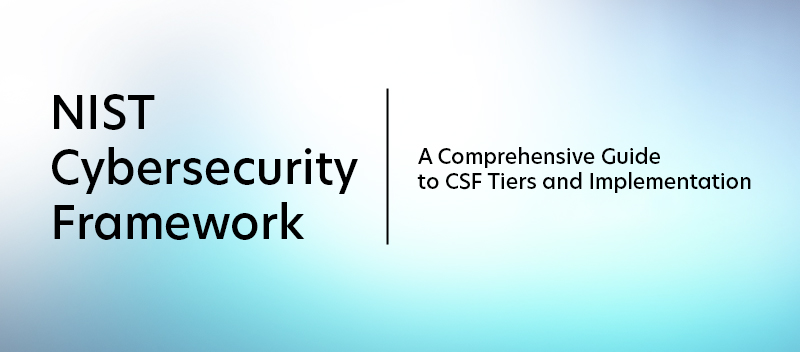
Modern businesses constantly face an avalanche of cyber-attacks from increasingly sophisticated elements. At the same time, they also have to adhere to stringent compliance standards while safeguarding sensitive information. Such a situation can be handled systematically but requires a structured approach. This whitepaper, NIST Cybersecurity Framework: A Comprehensive Guide to CSF Tiers and Implementation, offers exactly that. It’s to help businesses and practitioners understand, implement, and benefit from the NIST Cybersecurity Framework (CSF). Overview of the NIST Cybersecurity Framework (CSF) The NIST CSF is a flexible, adaptable blueprint for cybersecurity. It breaks down risk management into clear functions like Identify, Protect, Detect, Respond, Recover, and Govern. The framework’s tiered architecture assists firms in matching their security to their business aims, risk, and legal needs. What This Guide Covers This whitepaper dives deep into two critical areas of the NIST CSF: — CSF Tiers These tiers categorize an organization’s approach to cybersecurity from the most basic to the most advanced. Understanding where your organization stands — and where it wants to be, is a crucial first step. — Implementation Strategies Practical tips and actionable guidance are provided to help you map the framework to your organization’s unique needs, ensuring security measures are neither overbuilt nor underpowered. Who Should Read This? This whitepaper speaks directly to professionals tasked with shaping or executing cybersecurity strategies: Cybersecurity practitioners who handle day-to-day implementation and monitoring. IT managers striving to integrate systems, processes, and policies under the framework. C-suite executives who are in charge of managing corporate risks and making decisions regarding strategy. Regardless of your position, this resource gives you the information and background you need to make sound decisions about enhancing your organization’s cybersecurity posture, aligning security initiatives with business objectives, and effectively managing risks. Addressing Common Pain Points Understanding and implementing the CSF isn’t always straightforward. Organizations often experience hurdles like: Interpreting the framework effectively. The language of standards can be dense. This guide simplifies it, focusing on what’s relevant and actionable. Deciding which controls to prioritize. Limited budgets and resources make it hard to address every risk at once. This whitepaper offers strategies for allocating resources intelligently. Meeting compliance requirements amid constant change. The guide provides insights on staying adaptable and proactive in the face of evolving regulations. The regulatory landscape keeps shifting, and companies need a framework that evolves with them. The NIST CSF is that framework. This whitepaper will help organizations improve their security posture while aligning with regulatory and business goals. It breaks barriers, simplifies complexity, and gives you a precise roadmap. What Is the NIST Cybersecurity Framework? The National Institute of Standards and Technology (NIST) developed the Cybersecurity Framework (CSF) as a standard that businesses can use as a tool to assess and manage cyber risk. By providing a common language and prioritization for security efforts, it offers a structured approach to enhancing cybersecurity. Initially released in 2014, the NIST CSF has become an industry-standard framework widely adopted across sectors. Its value is in its flexibility. By being scalable, the CSF applies to small businesses and multinational corporations, regardless of their cyber maturity. It’s not prescriptive but adaptive, so it fits well for organizations with different operational needs and risk profiles. Helping businesses match their security efforts with business goals and legal and regulatory obligations is its main focus. To put it briefly, the CSF serves as a link between more general organizational management procedures and technological security measures. Development History and Updates From CSF 1.0 to CSF 2.0 The original NIST CSF (version 1.0) was developed in response to Executive Order 13636, issued in 2013, which sought to improve critical infrastructure cybersecurity. Released in 2014, CSF 1.0 was crafted through collaboration with industry leaders, academia, and government stakeholders. Its debut marked a milestone in cybersecurity by offering clear guidance that was both accessible and actionable. However, the rapidly changing threat landscape necessitated updates. Enter CSF 2.0. The updated version, released in early 2024, incorporates advancements to address evolving cybersecurity needs. While maintaining the fundamental ideas of the framework, it stresses a more inclusive approach, expanding the focus to topics like supply chain risk management and governance. The introduction of a new functionality named Govern, intended to improve organizational monitoring and decision-making capacities, is one of the major improvements. Why the Updates Matter CSF 2.0 builds upon the solid foundation of its predecessor while incorporating feedback from years of real-world application. These updates ensure that the framework remains relevant, effective, and forward-looking amid an era marked by increasing digital sophistication and cyber threats. Core Components of the NIST Cybersecurity Framework The framework is centered on its key components, which form the cornerstones of a strong cybersecurity program. These elements consist of the Framework Profile, Implementation Tiers, and Core. Specifically, the Core is the most actionable component of the system and specifies its structure. — The Addition of the ‘Govern’ Function One notable enhancement in CSF 2.0 is the introduction of the Govern function. This provision underscores the increasing understanding that strong organizational governance and accountability are necessary for effective cybersecurity. Establishing governance frameworks, allocating risk ownership, and coordinating cybersecurity with internal and external regulatory mandates are the main objectives of the Govern function. With Govern joining the existing functions of Identify, Protect, Detect, Respond, and Recover, organizations can now approach cybersecurity with a more comprehensive lens that integrates strategic leadership. — Explanation of the CSF Core The CSF Core is the heart of the NIST framework. It is organized into six primary functions that collectively represent the key elements of a holistic cybersecurity strategy. Beneath these functions, Categories, and Subcategories break down tasks into more specific and manageable activities, allowing organizations to tailor the framework to their specific needs. — The CSF Core Functions Identify This function establishes the foundation for successful cybersecurity by assisting businesses in understanding their assets, systems, data, and threats. Key areas include asset management, risk assessment, business environment, and supply chain risk management. Protect Creating protections to guarantee the ongoing resilience of
9 Business Leaders Share Barriers to Meeting Cybersecurity and Compliance Goals
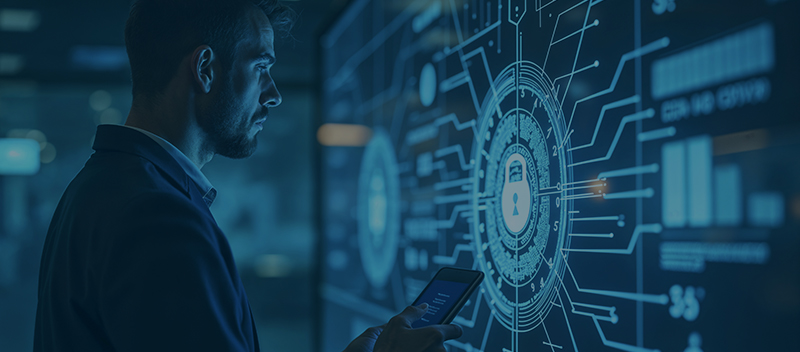
Cybersecurity and compliance are no longer optional in today’s interconnected digital landscape — they are essential for safeguarding sensitive data and maintaining customer trust. And yet, the challenges that confront many organizations are nonstop; from evolving threats to complicated regulatory obligations, these businesses struggle to meet their most pressing goals. We at TrustNet surveyed 12 corporate executives to learn what is most commonly keeping their companies from succeeding in cybersecurity and compliance. Barriers to Achieving Cybersecurity and Compliance Goals — Balance Security and User Convenience “The predominant hurdle in meeting cybersecurity and compliance goals today is the balancing act between security protocols and user convenience. As a SaaS business owner, I see the implementation of multi-factor authentication (MFA) as essential, yet the pushback comes from perceived user inconvenience. Many executives struggle with getting their teams to adopt stringent security measures because they fear impacting productivity or employee satisfaction. To address this, I focus on communicating the importance of security in protecting both the business and its customers, highlighting real-world implications of breaches. By emphasizing the critical role of MFA in safeguarding sensitive information, I aim to foster a culture where security is seamlessly integrated into daily operations, overcoming resistance and ensuring comprehensive compliance.” Valentin Radu, CEO & Founder, Blogger, Speaker, Podcaster, Omniconvert — Bridge Knowledge Gap Between Teams “The biggest hurdle C-suite executives and compliance managers face in meeting cybersecurity and compliance goals is the knowledge gap between technical teams and leadership. This gap often results in poor decision-making and ineffective implementation of cybersecurity measures. While the IT team might have the technical know-how, translating this into actionable strategies for the leadership team can be challenging. Fostering an environment where there’s consistent, clear communication between these groups can significantly bridge this gap. Establishing regular workshops or sessions where technical teams can simplify and present core cybersecurity issues to executives can enhance awareness and understanding, leading to more informed decisions. Leadership must be well-versed in the basics of cybersecurity threats and the importance of compliance to prioritize them effectively. To tackle this, consider developing a tailored cybersecurity training program for executives. This isn’t about turning them into tech experts but empowering them with the necessary knowledge to recognize risks and validate strategies from a business perspective. With improved understanding, executives can assess and support tech solutions more robustly, ensuring that cybersecurity efforts align with the broader business objectives and compliance standards.” Casey Meraz, CEO, Juris Digital — Adapt to Evolving Technology and Regulations “Here at our company, one of the bigger hurdles in meeting our cybersecurity and compliance goals has been the quick evolution of technology and regulations. Keeping ahead of new threats and adapting to updated compliance frameworks is a constant challenge. As tech advances, so do the strategies of cyber attackers, pushing us to continually refine our defenses and sometimes completely update our protocols. Additionally, aligning our cybersecurity initiatives with compliance mandates can be intricate, as ensuring that updates satisfy all regulatory requirements isn’t always straightforward. This environment requires our team to be exceptionally agile and visionary—making sure the security and compliance of our data and that of our customers.” Marin Cristian-Ovidiu, CEO, Online Games — Overcome Resource Constraints “Lack of resources is often one of the biggest problems that come up when trying to meet safety and compliance goals. Cybersecurity needs a lot of money to be spent on both tools and technology, as well as trained workers who can handle threats, set up controls, and ensure that rules are always followed. Another big problem is that rules and regulations change quickly. As privacy and safety standards change, it can be hard to keep up with new laws and industry-specific standards. This can put a strain on both time and money. There aren’t enough trained cybersecurity experts, which makes it hard to put together a strong team. Companies have a hard time meeting the strict requirements of modern safety and compliance programs without having staff with the right skills. Because of this talent gap, businesses often have to either use their own resources too much or depend on third-party solutions a lot.” Arvind Rongala, CEO, Edstellar — Stay Ahead of Digital Threats “In my experience as CEO of a technology-based company, the largest barrier to achieving our cybersecurity and compliance goals is the rapidly-evolving nature of digital threats. Cybercriminals are always advancing their methods, making it challenging to maintain robust protection. For instance, when we transitioned to advanced automated production lines, ensuring the security of our proprietary technology was a primary concern. Also, internal compliance can be another roadblock, particularly in a multinational setting with varying regulatory landscapes. A lesson I’ve learned over the years is to adopt a proactive approach by investing in continuous R&D and employee training. This way, we can stay ahead in understanding and responding to imminent threats timely and efficiently.” Tony Chen, CEO, Srlon — Integrate Security into Daily Operations “Honestly, one of the biggest barriers to meeting cybersecurity and compliance goals is the disconnect between security teams and business operations. Security is often implemented piecemeal in terms of the technical side, without taking into account the day-to-day workflow and productivity implications. And so, whenever something new is put in place, there’s resistance because it is disruptive or unworkable for those implementing it. It isn’t that people don’t want better security; it’s that they don’t want to put unnecessary burdens on their day-to-day tasks. For instance, multi-factor authentication (MFA). You need it for security, but if it’s configured to slow down entry for employees who need to bounce between systems, frustration and even workarounds can be used to undermine security. My advice? Bring representatives from all departments on board to ensure security objectives are realistic and integrate seamlessly into daily operations. When security is more a part of the workflow than a barrier, compliance objectives and buy-in from across the organization are much more likely to happen.” Thomas Franklin, CEO, Swapped — Keep Pace with Cyber Threats “In my experience, the biggest barrier to
Revolutionize Your Security: Unveiling the Power of Next-Gen Cybersecurity Monitoring
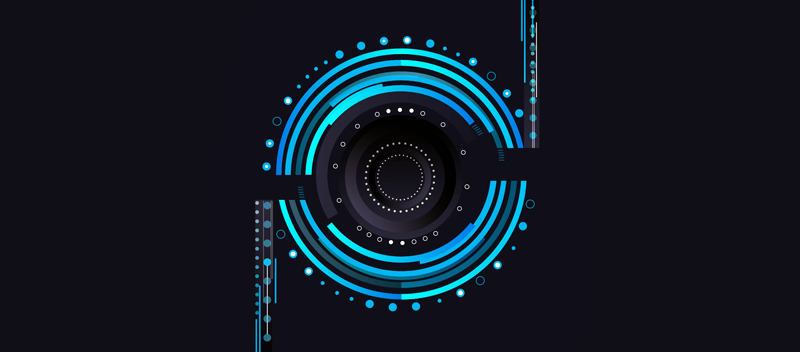
The environment of cybersecurity has drastically changed in the past year. As geopolitical and economic changes make the world more difficult and uncertain for businesses as well as consumers, there is an increasing need for proactive security measures. Malicious actors are always adapting to new technological advancements, and new players and dangers have emerged globally. This is in addition to creative ways of utilizing or abusing pre-existing tactics and techniques. Enter next-gen cybersecurity monitoring — an innovative approach that vastly outperforms traditional methods. This article delves into the limitations of conventional monitoring techniques, such as delayed detection and limited threat visibility, and explores how next-gen solutions, including AI-powered analytics and continuous threat intelligence, provide enhanced threat detection and streamlined incident response. The Limitations of Traditional Monitoring Traditional monitoring methods, like log analysis, might once have been the backbone of cybersecurity, but now they’re beginning to show their age. You might have noticed it yourself, those nagging delays in spotting threats or the ominous blind spots that leave you guessing about potential vulnerabilities. Let’s break down why these methods are struggling to keep up. – Delayed Detection First, there’s the issue of delayed detection. Traditional monitoring often relies on periodic log reviews, meaning real-time threat detection simply isn’t in the cards. By the time a threat is identified, the damage might already be done. It’s like trying to catch a thief by reviewing last week’s security footage, valuable, but often too late. – Incomplete Coverage Then, we have incomplete coverage. The sheer volume of data generated by modern networks is staggering. Traditional methods can only handle so much, leaving significant gaps where threats can sneak through unnoticed. It’s akin to having holes in your fishing net; you catch some but miss others. – Limited Threat Visibility Finally, consider the challenge of limited threat visibility. Traditional monitoring focuses on known threats, but as you know, cyber threats are evolving faster than ever. With only a narrow view, these methods often miss the subtle signs of emerging dangers. Summary of Pain Points 1. Delayed Detection Slow identification of threats Reactive rather than proactive approach 2. Incomplete Coverage Limited data handling capacity Potential vulnerabilities overlooked 3. Limited Threat Visibility Focuses on known threats only Struggles with identifying new, subtle threats By understanding where these traditional approaches falter, you can better appreciate the need for a more robust, next-gen monitoring solution that addresses these limitations head-on. Learn more about our Next-Gen Managed Security services Here The Power of Next-Gen Monitoring Solutions At their core, these next-gen monitoring solutions are designed to provide comprehensive visibility and real-time analytics, ensuring you’re never caught off guard. 1. Advanced Techniques Next-gen monitoring leverages several cutting-edge techniques to keep you a step ahead: AI-Powered Analytics: AI-powered analytics processes vast amounts of data quickly, identifying patterns that might indicate a threat. This allows you to detect and respond to threats as they occur, not hours or days later. User Behavior Monitoring: By understanding normal user behavior, these solutions can detect anomalies that suggest malicious activity. It’s like having a radar that alerts you the moment something unusual is detected. Continuous Threat Intelligence: Threats evolve, but so does our intelligence. Continuous threat intelligence ensures you’re always informed about the latest vulnerabilities and attack vectors, allowing you to adapt your defenses in real-time. 2. Benefits of Next-Gen Solutions The advantages of adopting next-gen monitoring are substantial and transformative: Enhanced Threat Detection: With real-time capabilities, you can identify and neutralize sophisticated threats as they emerge, minimizing potential damage. Improved Incident Response: Time is of the essence when responding to attacks. These solutions streamline your response efforts, helping you act swiftly and decisively. Comprehensive Monitoring: Whether it’s your network, endpoints, cloud environments, or user activity, next-gen solutions provide a holistic view, leaving no stone unturned. Actionable Insights: Armed with valuable data, you can prioritize vulnerabilities effectively, bolstering your security posture and making informed decisions. By embracing the power of next-gen monitoring solutions, you gain more than just a security upgrade; you gain peace of mind. TrustNet – Your Next-Gen Monitoring Partner In safeguarding your digital assets, it is important to work with a partner who can appreciate the dynamics of cybersecurity and customize the service to your needs. This is where TrustNet comes in. Owing to many years of experience in the cyber security domain, we have made it our mission to offer you the best solutions that put you one step ahead. Our Next-Gen Monitoring Services At TrustNet, we offer a comprehensive suite of next-gen monitoring services designed to cover every facet of your security needs: Network Security Monitoring: We ensure your network is fortified against intrusions with real-time monitoring and advanced analytics. Endpoint Security Monitoring: Protecting your endpoints is critical. We provide robust monitoring solutions to guard against unauthorized access and malware. Cloud Security Monitoring: As your operations move to the cloud, TrustNet ensures your cloud environments are secure, compliant, and resilient against attacks. User Behavior Monitoring & Analytics (UBA): By analyzing user behavior, we detect anomalies that might indicate potential security breaches, enabling proactive measures. Threat Intelligence Integration: Stay informed with the latest threat intelligence, seamlessly integrated into your security strategy for a proactive defense. Customization and Client Focus At TrustNet, we believe in a customized approach to cybersecurity, as every organization faces unique issues and has its own requirements. We provide more than just technology; it is about empowering your organization’s entire defense strategy. With TrustNet by your side, you’re not just keeping up with the digital age — you’re leading the charge with confidence and peace of mind. Embrace the Future with Next-Gen Cybersecurity Monitoring Today, staying one step ahead is non-negotiable. Next-gen cybersecurity monitoring offers a transformative approach, enabling enhanced detection that catches even the most sophisticated threats in real-time. With improved incident response, you can act swiftly and decisively, minimizing potential damage. Furthermore, comprehensive monitoring ensures no part of your digital ecosystem is left unchecked, from networks and endpoints to cloud environments and user activities. And with


